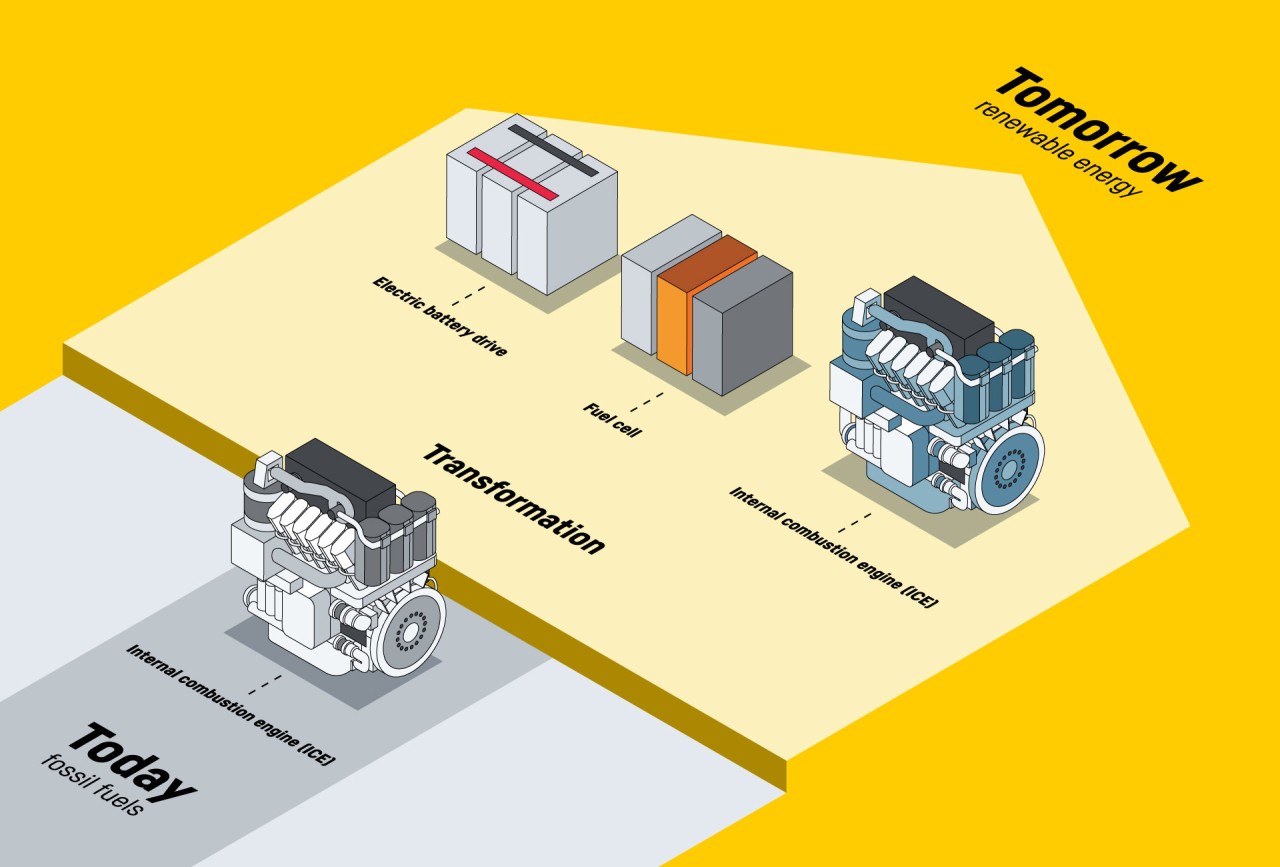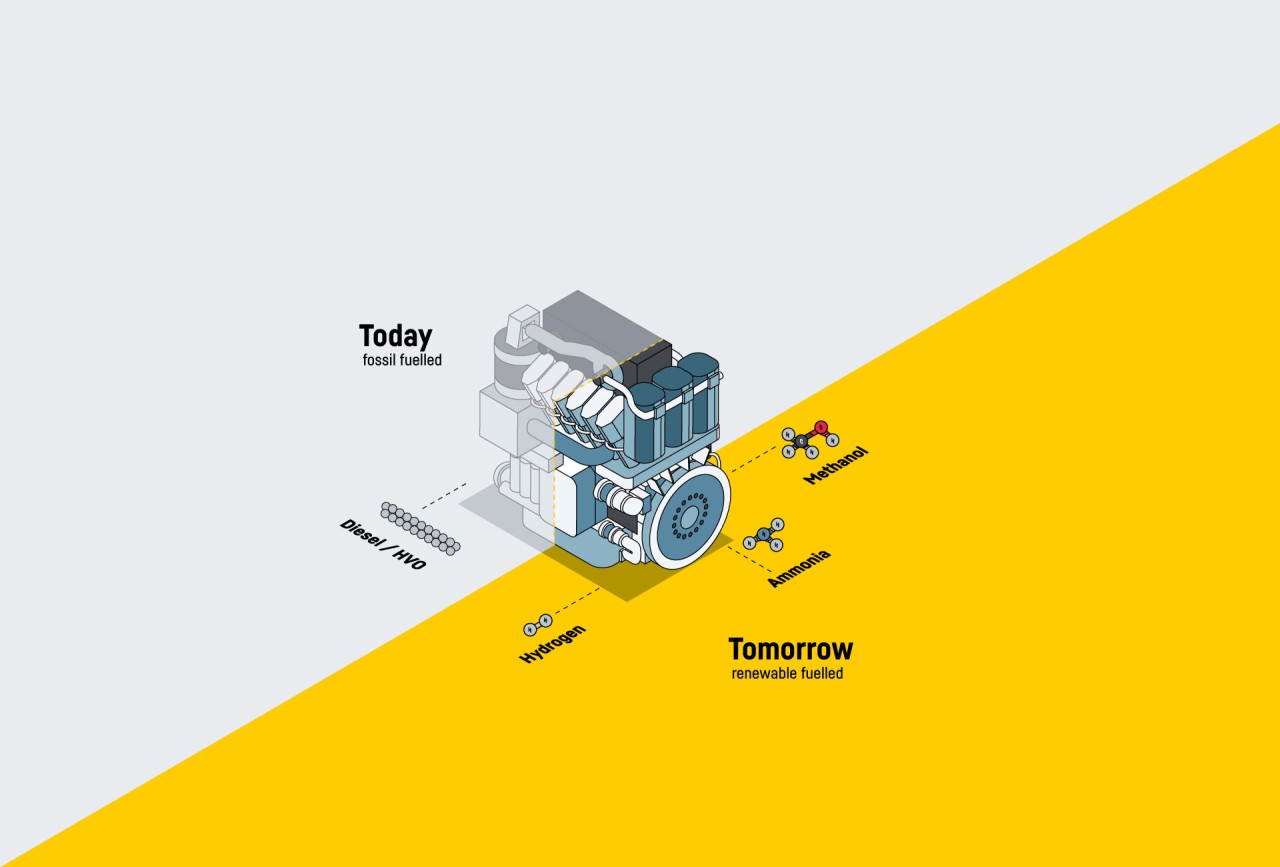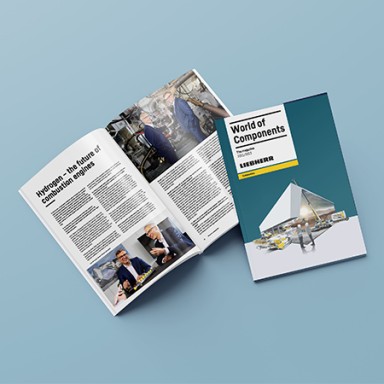Open-technology approach
The reduction of global greenhouse gases is a significant challenge of our generation. Striving to reach net zero emissions in the future, Liebherr works on alternative and climate-friendly powertrain concepts.
Thereby, the Liebherr team pursues an open-technology approach. In the field of internal combustion, the focus of the research and development activities lies on multiple solutions, depending on the needs different fields of application will require in the future. Being a promising, carbon-free energy source, hydrogen is one of the options to power an internal combustion engine that builds a bridge to other alternate fuels.
Liebherr is convinced
that ICE will remain an important solution for heavy-duty and off-highway vehicles

By clicking on “ACCEPT”, you consent to the data transmission to Google for this video pursuant to Art. 6 para. 1 point a GDPR. If you do not want to consent to each YouTube video individually in the future and want to be able to load them without this blocker, you can also select “Always accept YouTube videos” and thus also consent to the respectively associated data transmissions to Google for all other YouTube videos that you will access on our website in the future.
You can withdraw given consents at any time with effect for the future and thus prevent the further transmission of your data by deselecting the respective service under “Miscellaneous services (optional)” in the settings (later also accessible via the “Privacy Settings” in the footer of our website).
For further information, please refer to our Data Protection Declaration and the Google Privacy Policy.*Google Ireland Limited, Gordon House, Barrow Street, Dublin 4, Ireland; parent company: Google LLC, 1600 Amphitheatre Parkway, Mountain View, CA 94043, USA** Note: The data transfer to the USA associated with the data transmission to Google takes place on the basis of the European Commission’s adequacy decision of 10 July 2023 (EU-U.S. Data Privacy Framework).PFI injects at pressures up to 15 bar into the air intake system. The uniform mixture homogenization in the intake manifold results in lower NOx emissions. Moreover, port fuel injectors work in less demanding operating conditions and as a consequence, time to market is much faster.
By clicking on “ACCEPT”, you consent to the data transmission to Google for this video pursuant to Art. 6 para. 1 point a GDPR. If you do not want to consent to each YouTube video individually in the future and want to be able to load them without this blocker, you can also select “Always accept YouTube videos” and thus also consent to the respectively associated data transmissions to Google for all other YouTube videos that you will access on our website in the future.
You can withdraw given consents at any time with effect for the future and thus prevent the further transmission of your data by deselecting the respective service under “Miscellaneous services (optional)” in the settings (later also accessible via the “Privacy Settings” in the footer of our website).
For further information, please refer to our Data Protection Declaration and the Google Privacy Policy.*Google Ireland Limited, Gordon House, Barrow Street, Dublin 4, Ireland; parent company: Google LLC, 1600 Amphitheatre Parkway, Mountain View, CA 94043, USA** Note: The data transfer to the USA associated with the data transmission to Google takes place on the basis of the European Commission’s adequacy decision of 10 July 2023 (EU-U.S. Data Privacy Framework).DI injects at pressures around 30 bar directly in the combustion chamber using a low-pressure process. The power density is similar to that of a diesel engine. DI is particularly well suited for applications with high demands on dynamics and power density within a limited installation space, such as mobile construction machinery.
Want to know more?
Contact our sales team or follow us on our LinkedIn channel














